the cut / paste tea m
kayla campbell ’16, mfa creative director
grace bridgeford ’19, mfa director of alumni relations
mara rosen project coordinator
london king ’22
hollie leggett’23 photographers
alumni achievement award
Greg Hoffman ’92 is being honored with the 2024 MCAD Alumni Achievement Award, which is awarded each year to an alum who has made a lasting and significant impact on the world of art and design. As former NIKE Chief Marketing Officer, author of Emotion by Design, and now founder and principal of the advisory group Modern Arena, Hoffman has developed break-through standards in creative branding and innovative design, inspiring countless individuals around the globe.
This publication celebrates the creative achievements and cultural leadership of alumni. Inside, you will discover innovative work done by peers as well as current students, the latest developments at the college, and ways to engage with your MCAD community.
our mission
MCAD provides a transformative education within a community of support for creative students of all backgrounds to work, collaborate, and lead with confidence in a dynamic, interconnected world .
MCAD STUDENTS BECOME:
+ Accomplished makers and scholars
+ Equity-minded problem solvers
+ Critical, conceptual thinkers
+ Inclusive, collaborative partners
+ Empathic listeners
+ Creative storytellers
+ Engaged citizens within a global context
thank you, supporters
We want to acknowledge everyone who has supported MCAD by making a gift. Any amount helps our students continue their education with fewer barriers to completion. Your generosity is greatly appreciated by students, faculty and staff. For more information, check out mcad.edu/support-mcad.
MCAD is committed to creating an environment where all students can succeed. Critical to this mission is the generosity of our alumni community, giving back in so many ways with time, talent, and financial resources.
Vol. 5 FRONT MATTER 00 00



SNACK TIME IN THE THE 3D STUDIO NOW AND THEN MODEL SUCCESS IN INTERIOR DESIGN 01 01

02 A LETTER SANJIT, WHERE ARE YOUR SAFETY SPECTACLES? 02
dear alumni & friends of MCAD,
Iam thrilled to pleased the latest edition of CUT/PASTE, our cherished alumni publication developed under the inspiring theme of “MCAD Changes Lives.”
At MCAD, we believe in the profound impact of art and design—on not only individuals who create, but also communities and environments that are touched by their work. This year’s theme celebrates the myriad of ways in which lives of our students, alumni, faculty, and their circles have been reshaped through their MCAD experience.
One testament to a transformative MCAD journey is the story of Greg Hoffman ’92 who perfectly embodies this year’s theme. Greg’s trajectory from a curious student to a revered figure in the design world illustrates the profound influence of MCAD on its alumni and the broader world. His contributions to the field extend far beyond his own professional accomplishments. As a lecturer, author, and mentor, he has dedicated himself to enriching the lives of others and sharing knowledge and insights as exemplified by his book Emotion By Design . Furthermore, his role as a board member at the college underscores his deep commitment to ensuring that MCAD continues to be a place where future leaders of the art and design world can flourish. In recognition of his commitment to giving back to the next generation of creatives, I am proud to announce that Greg will be the recipient of the 2024 Alumni Achievement Award.
We are surrounded by so many powerful reminders of MCAD’s effect on lives touched through creativity. I know you will be energized by these stories coming from our vibrant community.
Thank you for your continued support and engagement with MCAD. Together, we are not just witnessing, but actively participating in the ways in which art and design can change lives. Feel free to drop me a line at ssethi@mcad.edu . with warm regards,
 SANJIT SETHI PRESIDENT
SANJIT SETHI PRESIDENT
FROM THE PRESIDENT 03 03
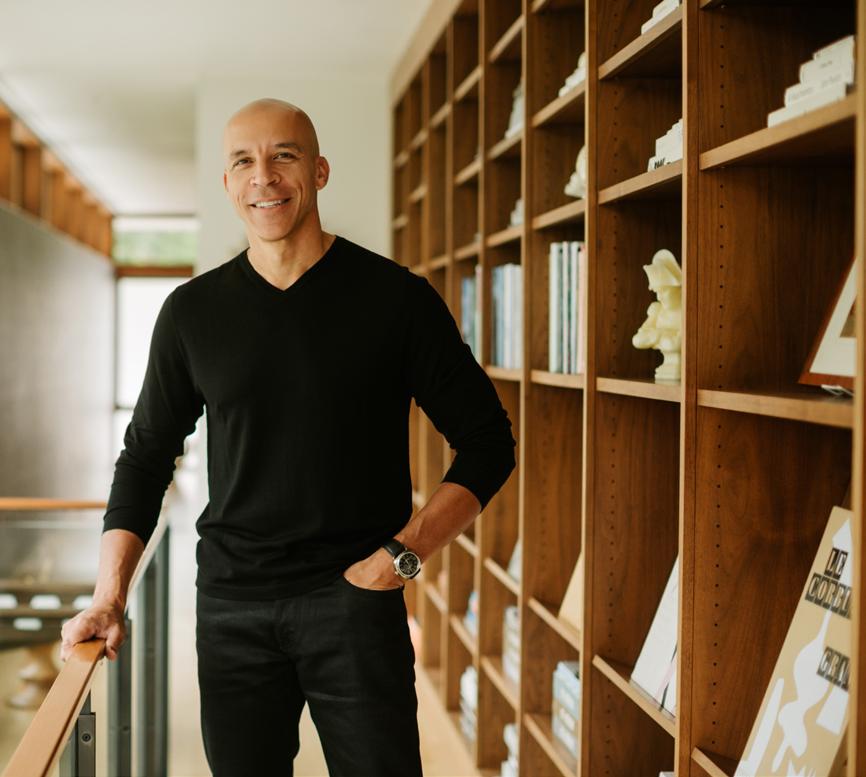
GREG HOFFMAN ’92 p . 00
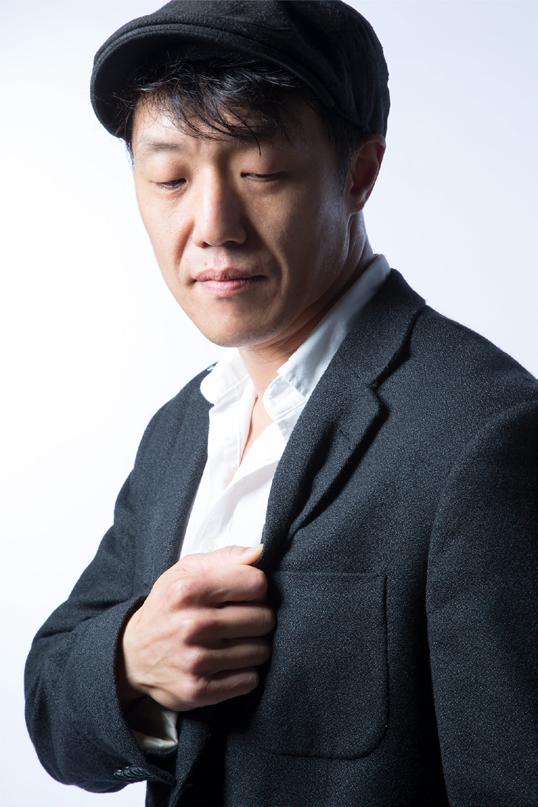
KEVIN KAMIN ’06 p . 06



MÓNICA SOFÍA ’18, MA p . 20
GOLDENMCNERNEY p . 07

CY DECOSSE ’52 pp .12–14

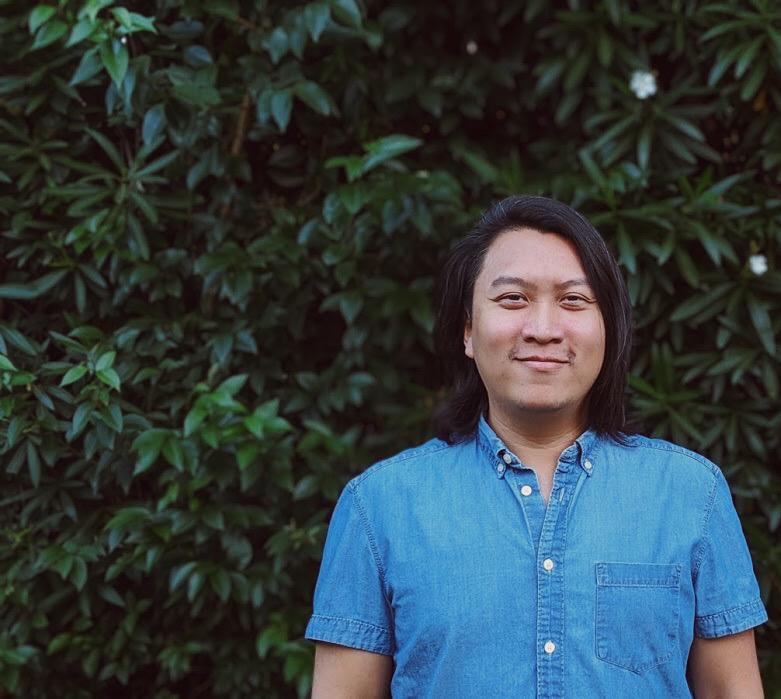
VANG ’11 pp . 14–15
KATYA KISIN ’19 p . 21

KING ’22 p . 22
REGAN
KIRA SABIN ’21, KESS FENNELL ’21 & GREYLEY SABIN ’21, p . 11
TOUSUE
LONDON
EMMA BEATREZ ’20, MFA, pp . 08–10

& LEE NOBLE ’20, MFA pp . 08–10
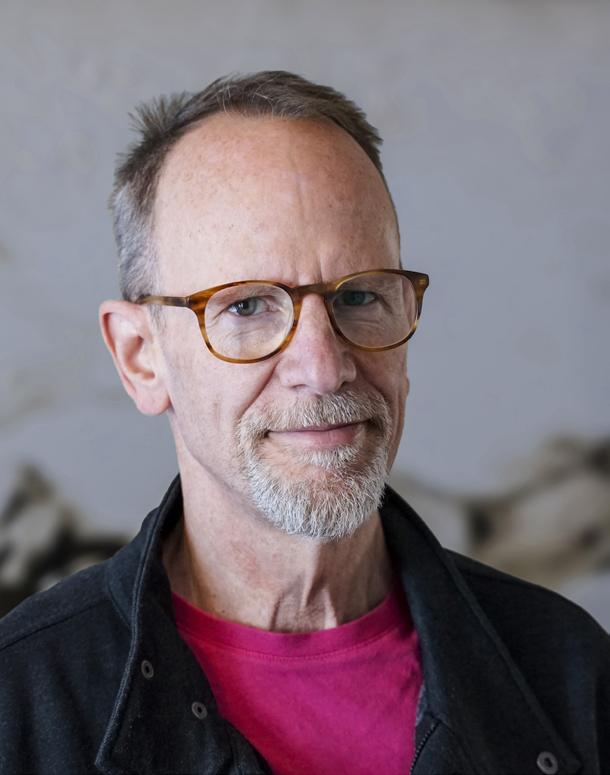

&

’93 p . 10
HENRY LABOUNTA ’82 pp . 16–17

LESLIE BARLOW ’16, MFA pp . 17–18



WADUD ’11, MA pp . 18–19


 SOPHIA JABBOUR-UBAN ’24
GIGI JABBOUR
SOPHIA JABBOUR-UBAN ’24
GIGI JABBOUR
XAVIER TAVERA ’14 p . 23 SARA SUPPAN ’16 p . 37 THE CUT/PASTE TEAM
IBADA
educatin g future
KEVIN KAMIN ’06
director, writer, producer, VFX artist, motion designer, & adjunct professor
Q: Why did you go to MCAD for college?
A: It was the only one on my list. In high school I attended a drawing class there and really enjoyed it. I didn’t jump into college right away. I started when I was 22.
Q: Tell me about your career journey.
A: I was a sushi chef at Fuji Ya. At the same time I was studying film and got an internship in motion graphics. It spawned my freelance career that continues to this day. I do motion graphics, video editing, color grading, and visual effects. My first staff position was in Best Buy’s creative production studio. From there, I moved to WCCO-TV where their mission is to make the community a better place. I am a brand manager in creative services–writing, directing, post-production, and strategy.
Q: Are you still doing any cooking?
A: No. I don’t like it. [laughs].
Q: What made you want to teach?
A: I’ve seen people who want to rise to higher levels professionally without a solid foundation. There’s a fallacy that you can watch YouTube tutorials and learn everything, which couldn’t be further from the truth. In the classroom there is real growth–you’re learning from classmates as much as you are from the instructor. To excel in any profession or medium, you need to be at the table where problems are being solved at a higher level.
Q: It sounds like teaching brings you joy.
A: Yes. I love the learning process. I’m not just telling students, “This is how you do A, B, and C.” They might nod their heads, but not really get it. What I teach are these principles over time. It’s rewarding to see students understand how the individual pieces can come together to make convincing digital illusions versus things that aren’t believable.
Q: How long have you been a professor and what’s changed?
A: This is my third semester. I had this idea that it’s going to be less prep each year. But it’s not. I’m always changing the course based on how students are responding and engaging in the classroom. I try to keep up with industry visual effects, like how they appear in current TV shows and movies, which makes the course feel more relevant. Students have to be in your class for five hours every week, so making learning fun is key.
Q: What do you hope for your students after attending your class?
A: It’s only one class, so they’re not creating Marvel-like shots. But I want them to be competent at visual effects and have a solid foundation where they can replace the sky in a scene or add cars to a street without the audience noticing. I also want them to be able to create the “wow” factor from their fantastical effects. Obviously, dragons don’t exist and meteors don’t smash into buildings, but the effects should be detailed enough where the audience accepts it. They know it’s not real, but they embrace it and enjoy it anyway.
06 FACULTY 06
REGAN GOLDENMCNERNEY
interim chair of fine arts, artist, writer & explorer of plants as a source of power and healing
Q: How did you become an artist?
A: I grew up in Minnesota and majored in both history and art at Grinnell College. I’ve always been fascinated by the way images are constructed, particularly images of the Midwestern landscape. There’s beauty here, but it’s understated. When I took a printmaking and prairie studies class in college, I realized that I wanted to combine my writing and art practice. In fact, I just curated an exhibition at MCAD called Seeing Plants , which evolved out of a series of essays I wrote for Walker Art Center.
Q: Did MCAD choose you, or did you choose MCAD?
A: I chose MCAD in 2015 to teach drawing in the foundations program. I came along when the college needed someone who worked interdisciplinarily and across media, with a background in writing. I love drawing because, as a theorist, I’m interested in perception. It’s fascinating how a group of people perceive the same space differently. Next fall I’m going to teach a landscape painting class that shows how our cultural perspective and experiences in nature inform the way we move through natural spaces. I also teach the Critical Studies course, which is required for all fine arts students during the first semester of junior year. It’s challenging and exciting.
Q: Why is it required?
A: Critical Studies is a pivotal opportunity for students to bring their technical expertise and
concepts together. The class explores the way we form aesthetic judgments about the world, and how we define beauty for ourselves and our community. The class was developed by Professor Emeritus Kinji Akagawa ’68 and focuses on how and what we perceive through our five senses. It absolutely informs our choices as an artist. This course comes before their advanced seminar, junior review and senior project where they will further develop their ideas and materials.
Q: By the end of the semester, how do you describe the group?
A: They are a solid, connected cohort. They know what they’re good at, technically speaking, but this class requires working outside of one’s comfort zone. Over time they learn to trust each other. To build that trust, I talk about my own artistic mistakes. It helps them see that, even as an established artist, you can still experience “failure” and benefit from it.
Q: What makes a student successful post graduation?
A: Three things: They’re open-minded risk-takers. They work interdisciplinarily, gathering insight and inspiration from people in other disciplines. And, they have a strong sense of community.
Q: You’re dedicated to your field and it shows. What’s next?
A: Thank you. I’m going to spend my summer photographing roses as an Artist in Residence at the Lyndale Rose Garden through the Minneapolis Parks. I’m so fascinated with the way roses have been altered by humans. I always go back to the question, “What’s driving those choices and what aesthetic judgments are being formulated to make a more beautiful rose?”
creative leaders
07 FOCUS 07
it’s a family affair
EMMA BEATREZ ’20, MFA & LEE NOBLE ’20, MFA
During the height of the pandemic, when museums and galleries closed down, and DIY art spaces disappeared, Emma Beatrez ’20, MFA, and Lee Noble ’20, MFA, found they missed the routine of talking about conceptual art late into the night, a habit the couple formed at MCAD when their studios were side by side. So they decided to try to recreate the vibe of their extracurricular art-study group called “Night Club” on the front lawn of their south Minneapolis home, where they began staging pop-up art exhibitions from a front room remade into a gallery space.
“Everything was just so depressing at the time. We thought, ‘What if we could provide this one thing, just starting conversations with other people about art?’” says Beatrez, an interdisciplinary artist who now teaches painting at University of Minnesota. In 2023, their timely, make-shift Minneapolis gallery grew to fill such a void in the arts landscape that they were soon invited to expand their operation, rentfree, in a vacant convenience store in St. Paul, as part of the city’s plan to bring some life back to deserted sidewalks.
The couple, who recently got engaged, have now curated nearly twenty shows and counting, featuring multidisciplinary artists from Minnesota and around the world, all without ever disagreeing on whose art deserves attention. “As far as picking artwork, we’re just super intuitive,” says Noble, who also has a day job at Cargo, the
ALUMNI
08 08

FEATURE 09 09
BEATREZ
EMMA
’20, MFA, & LEE NOBLE ’20, MFA
site platform for artists and designers. “We both feel like the best way to improve our own work is to look at tons of art all the time and learn by doing. And we’ve met so many nice people doing positive things that we just want to keep going.”
While they’ve received some support from St. Paul’s Downtown Alliance and Midway Contemporary Art’s visual arts fund, Night Club is a deeply personal project for the pair, in part because it reminds them of their studio days in art school. “To have dedicated time and space where you’re just experimenting is really important to us,” says Noble. “At this point, we don’t really know what the future holds, but we did get ‘Night Club’ tattoos, so I guess that means we’re committed.”
GEORGETTE JABBOUR (GIGI) ’93, SOPHIA JABBOUR-UBAN ’24, & DEBORAH ABRAHAMSON
MCAD photography senior Sophia Jabbour-Uban ’24 will probably not grow up to be a doctor or a lawyer, and her family couldn’t be prouder. “Art was always a part of our daily practice, and my mom and my dad nurtured creating things as a life skill,” she says. “I have classmates whose parents are disappointed they’re in art school, but for my family, creativity is definitely allowed.”
In fact, Sophia is about to become a third generation MCAD alum, following behind her late grandmother, Deborah Abrahamson, who studied painting at MCAD, and her mother Gigi Jabbour ’93 and father Aaron Uban ’94, who met while they were students. Her grandfather, Gabriel Jabbour, a former fine arts photographer, even sponsors an annual MCAD scholarship through the family business, West Photo, the iconic photographic supply store in northeast Minneapolis.
“If you think of something you want to exist in the world, somebody in my family could probably make it, which is why I’ve always held that as a high value,” says Gigi. “My uncle, who was a jeweler, has a 3D printer and just collaborated with me on some stamps I wanted to make for my pottery. From my grandmother’s knitting and sewing to my father’s welding, I would say we’re really a family of makers.” This fall, Sophia and Gigi proved it with mother-and-daughter submissions to the MCAD Art Sale, which recently expanded the rules of the event to include the work of all generations of alumni talent.
Sophia’s parents look forward to graduation from their alma mater in December and make her way in the world of photography. They’re confident that her time at MCAD will pay off even if she takes a different path. “While I still work with my hands creatively, it’s not my ‘real’ job,” says Gigi, who is the owner and marina manager at Minnetonka Marina and Skiff Craft. “I come to my business with a different mindset than I would have if I’d gone to business school. When I have a goal, I come at it in creative ways. Learning to make art at MCAD teaches critical thinking, being comfortable with trial and error, and other skills that really matter.” Her daughter Sophia agrees. “MCAD has given me much better critiquing skills, to look at my work objectively and decide what’s working and what’s not. I know that’s a skill that I can apply in my real life in lots of ways.”
ALUMNI
10 10

KIRA SABIN ’21, KESS FENNELL ’21, & GREYLEY SABIN ’21
With frequent TikTok posts about her tireless quest to win the Federal Duck Stamp Competition, Kira Sabin ’21 has amassed an extraordinary amount of moral support from her online art community—with ten million “likes” and counting. But close viewers of her funny and self-effacing videos can see that she’s got an equally impressive support network in the home she shares with twin sister, Kess Fennell ’21 , and wife, Greyley Sabin ’21.
“It’s like parallel play, where we’re all working on the different things but in the same room,” says Greyley. “Because of our time at MCAD, we’ve all learned how to professionally critique our work so that no one takes offense to suggestions.”
Right now, Greyley is working on several mural commissions, while Kira and Kess are getting set to enter individual paintings in the 2024 Federal Duck Stamp Competition, an annual U.S. Fish and Wildlife program that raises nearly $40 million each year for conserving waterfowl habitat. Kess is fairly new to the competition, having submitted her first painting in 2023. But Kira, who started competing while she was still a student at MCAD, has become a duck-stamp media darling thanks to a post that went viral, receiving more than 2.6 million views and getting national coverage on CBS News, Audubon, and BuzzFeed.
“I’m really introverted in person, so TikTok was a way that I could interact with the public without interacting with the public directly,” she says. While some of her 200,000 plus followers are also duck-stamp enthusiasts, Kira’s joyful approach to painting, in addition to improving year after year, is probably her biggest draw. “I think people like to follow people who are passionate, but also, because there’s a lot of information about ducks. It’s a little bit comical.’’
Kira’s open about her dreams of painting a “Million Dollar Duck” one day, and honest about her disappointments, including her recent loss in the first round at the Ohio Duck Stamp competition. “People usually assume that I’m doing well because I’ve been given a lot of attention, but in reality, I’m not fantastic,” she says. “There are so many talented artists out there. I have a good understanding of where I do fall, and when I’m not up to par. But I still enjoy putting it out there.’’ While she knows she may never reach the ranks of Minnesota’s legendary Hautman brothers, who’ve won the competition sixteen times (and who’ve encouraged her to keep at it), she’s hopeful about her progress: “What I’m learning so far is that as an artist, you’re going to fail, over and over again. But if you keep trying, you will improve.”
FEATURE
11 11
SABIN ’21
KIRA

trajectory change
ALUMNI 12 12 CY DECOSSE INCORPORATED A UNIQUE CREATIVE ORGANIZATION
CY DECOSSE ’52
From a very young age Cy DeCosse ’52 knew he was an artist, but his father had a much different idea of the professions his four sons should follow–medicine or architecture. DeCosse says, “He had a pretty Victorian mentality about art as a career. That drove me to prove to my father that it was worthwhile to be an artist.”
DeCosse attended University of St. Thomas in St. Paul to give architecture a try. But when his family moved to Montana to start a furniture business and left him to his own devices, DeCosse made a life-changing decision and applied to MCAD to study photography, drawing, and design. He wrote his entire application in calligraphy and was accepted with a scholarship. “When I arrived at MCAD, I was like a duck who found water. I just loved it. I dived into everything I could,” he says.
As a student, DeCosse landed his first of many ad agency jobs, working nights and weekends to help pay for school. It was just the beginning of a long, successful career in advertising, publishing, and photography. Sadly, his father never understood what he did. He says, “My father saw me making a living, which surprised him. ‘Drawing, is that what you do?’” Hardly. DeCosse was on a trajectory to become an award-winning agency executive, producing major TV commercials in New York and building a national reputation for photography.
After years working for others, DeCosse took a professional risk in 1969 by starting his own creative company. At that time he was known for his expertise as a food photographer. “I liked to shoot food as the star. My images could generate real appetite appeal,” he says. His biggest break came when he was hired to create a microwave cookbook for Magic Chef Ovens, just as microwave sales were exploding, but no one knew what to do with this new kitchen technology. His team tested the recipes, shot the photography, and set the type for the cookbook, which was later licensed by Random House and became a bestseller. “So low and behold, we picked up similar projects from GE, Samsung, Toshiba, and so many more. The orders almost swamped our poor little company,” he says.
Ever the visionary, DeCosse knew his company was onto something big, and decided to produce their very own microwave cookbook. After experiencing sleepless nights worrying about too few sales and too much inventory, DeCosse could finally relax–the orders started to roll in like a giant wave. “We became the microwave cookbook makers of the world,” he says with a smile.
From that point on, DeCosse and team became a sought-after design and production house for a wide range of “how to” books, from Singer Sewing to Black & Decker Home Repair, riffing off the direct-to-consumer model of Time-Life Book series mailed to households in monthly installments. DeCosse built a 15,000-squarefoot warehouse that was soon filled with books, and then added a 60,000-square-foot building down the road. “We had to really hustle to fill all of those book orders,” he says, “And we no longer had to look for work.”
With decades of sweat equity in the business and almost 200 employees, DeCosse knew it was time to think about what’s next. “One of my mentors told me that you don’t have to go out and look for butterflies. If you keep your eyes open, the butterflies land on you.” He was right. A butterfly called Cowles Media landed in 1994. With a sound offer in hand, DeCosse agreed to sell the business. “I had set up an employee ownership program, so a lot of people in the company walked away with quite a bit of money, not just me,” DeCosse says proudly.
FEATURE 13 13
Looking back, DeCosse remembers how the book business gave him great pleasure because he was making something useful for others. “That’s what an artist has to do–make a pot or a picture or a story or a ring. There’s a real joy and skill in that. That’s why instead of calling ourselves artists, we should call ourselves visual engineers; we make whatever you imagine.” Even in his 90’s, Decosse is still a dedicated artist. Whether painting with egg tempera, cartooning, or platinum photographic printing, he fully embraces all the possibilities and unexpected results of “making things” in his art studio.
Over the last fifty years, DeCosse has been a loyal supporter of MCAD. He is a long-time donor and, to this day, DeCosse sits on the MCAD Board as a Lifetime Trustee. He has established a named scholarship fund for students in need of financial support. For years he has donated his own art to the annual art auction to help students pay for tuition. In the 90’s, DeCosse and his wife Paula helped establish MCAD’s Florence Exchange Program–their way of paying forward the Fulbright scholarship that he won and allowed him to study in Italy.
DeCosse gives much credit to MCAD for giving him the tools to succeed as an art director, photographer, publisher, and creative leader. In addition to learning typography, book making, and design skills at MCAD, he also cites the school’s focus on critical thinking, flexible thinking, and humility. He says, “The world is full of problems, graphic and otherwise. Some creatives think that their first idea is so fabulous that nothing can possibly beat it. They’d fall on a spear for it, even if it doesn’t work. I learned early on to keep thinking and listening to come up with a better answer.”
As he looks back fondly, DeCosse sees himself “going to this small school and just sailing off like a rocket. That’s what MCAD did for me.” Would he have predicted this amazing journey? “Not in a hundred years.”
TOUSUE VANG ’11
Tousue Vang ’11 was still new to MCAD when faculty alum and advertising legend Nancy Rice ’70 gave him words of encouragement that he never forgot. “She praised me as a talented designer from the first class I had with her until graduation,” says Vang, now a brand designer with Articulate, a global e-learning platform. “I had no idea what it meant at the time, but it’s something I still think about, knowing that someone like Nancy believed in me. Sometimes when you need a push like that, it’s all it takes for you to get to that next step.”
Growing up in Superior, Wisconsin, the son of Hmong immigrants, Vang had plenty of encouragement to be creative, but it wasn’t until he transferred to MCAD from University of Minnesota, Duluth, that he came to believe art could actually sustain him. “Where I’m from, art is something you do on the side–it’s not a career,” he says. “One of the first things I learned at MCAD is that you can make a living as an artist because all of the professors were working artists, designers, and professionals in their field. To have people embodying that ability proved it was possible and powerful. There was also a standard of excellence that every person had–not just the professors, but also the students. It was like being average was not part of the equation. Everyone here was going to push you.”
ALUMNI
14 14


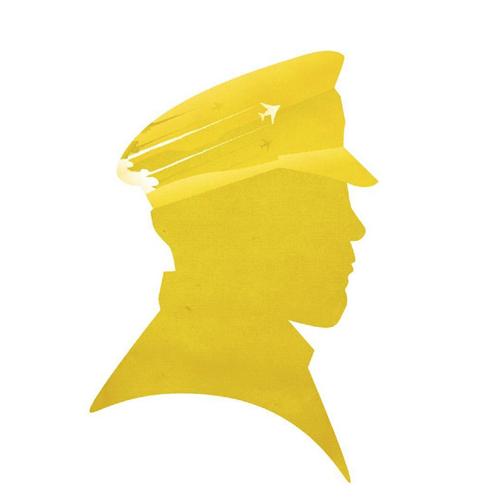
Vang had the chance to reflect on his artistic journey in a recent episode of Craft in America , a PBS documentary series that explores artists, makers, and culture bearers from around the country. The piece, which aired spring 2023, explores the Hmong tradition of paj ntaub, the flower cloths and story quilts that have helped to preserve Hmong culture in America. It’s a tradition he talks about with his mother Mai Chou Vang, herself a gifted quilter and pattern maker. “She always wanted to make sure that we never forgot who we were, or the stories of our people, and her and my dad’s journey from Laos and Thailand,” says Vang, who reinvents the story quilt as a motion-graphic artwork in his own featured work Hmong Minnesota .
Now living in Northern California, with a demanding design career that’s also included brand building at Coursera, an open online course provider, Vang still makes time to complete at least one new passion project every year, teaching himself new skills, like 3D illustration, to keep his creative spark alive. “I think a way for me to understand who I am as a creator is to create something that did not exist before,” he says. “But I’m the artist I am today only because of the people who’ve mentored and coached me. MCAD was an important part of that evolution.”
FEATURE 15 15 TOUSUE VANG ’11
helped me help others
HENRY LABOUNTA ’82
Henry LaBounta ’ 82 has had dozens of interesting roles and job titles during his long career in visual effects, from being the Dreamworks VFX lead who parted the Red Sea in The Prince of Egypt, to being the official tornado designer on the movie Twister. But since moving in 2020 to Minneapolis’s East Isles neighborhood with his wife, Barbara, local media have given him a new title–“The Trash Hero of Uptown’’–for removing several tons of garbage from Lake of the Isles.
LaBounta’s clean-up campaign started during the pandemic, when he wheeled his kayak to the lake for an inaugural voyage, only to find the shoreline littered with garbage. He says, “It was like a giant bathtub full of trash and I thought, ‘I don’t accept this.’” That first day he collected as much refuse as he could fit into his kayak. Soon after, he returned in borrowed, chest-high waders to make trash pick-up his ongoing project. “Cleaning up feels like the price of admission for enjoying this beautiful, natural resource,” says LaBounta. After organizing a group of neighbors, they’ve collected more than 4,300 gallons of trash just last year and over 120 syringes over the past couple years. “If you want to enjoy nature, you’ve got to take care of it.”
Though he may sound like a Sustainable Design major, LaBounta was actually one of the first MCAD students to study computer-generated art and design. “Just to give you an idea of all of the changes that can happen in a lifetime, when I was a student at MCAD, there was a small room that looked like a broom closet where they put an Apple II computer,” he says. “Nobody went into that room except for me. I thought it was fascinating, but I got a lot of flak from other students wondering, ‘Why would you ever use a computer to make art?’’’ Undeterred, LaBounta took several additional elective courses in computer science at Macalester College before setting out on a career path that’s included
Magic,
ALUMNI
stints at Industrial Light &
Dreamworks, Electronic 16 16
17 Arts, and other video-game makers where he’s served as Visual Effects Supervisor and Senior Art Director, bringing big-screen CGI effects to the gaming world. Now semi-retired, LaBounta is taking full advantage of the alumni discount for MCAD’s continuing education classes, kick-starting his own creative practice by studying drawing, painting, and portraiture. He’s also helped MCAD host an Earth Day clean-up of neighboring Morrison Park and its surrounds, an effort he believes is a natural fit for the MCAD community. “As artists and makers, we know how to work with our hands to get things done. It’s natural for us artists to see the potential in our environments,” he says. “You could also argue that cleaning up is a form of art. Who doesn’t want things to look more beautiful, or at least appealing?”
LESLIE BARLOW ’16, MFA
Painting can be a solitary pursuit, but not the way Leslie Barlow ’16, MFA, practices it. From her Minneapolis studio in the Northrup King building, Barlow is building a big name for herself with her vibrant, life-sized portraits and active exhibition and teaching schedule. She also does collaborative work with Creatives After Curfew and acts as the studio director of Public Functionary. Her latest group effort is ConFluence, a BIPOC-focused, sci-fi fantasy and futurism convention, held for the first time last November. CUT/PASTE talked to her about why building community is a common thread in her work.
Q: Your Instagram account lists “Intergalactic Queen” as one of your roles. Tell us more about starting up the ConFluence multiverse convention and cosplay meet-up.
A: As someone who’s gone to sci-fi and fantasy conventions for over a decade now, I’ve always been disappointed in the lack of representation in not only the content shared in these spaces, but also the leadership, guests, and audience. I was like, I know there’s more nerds of color out there, but I wasn’t finding them in these spaces.
I wanted to see if there was a way to carve out our own space where folks could feel like they’re outside of the white gaze and able to be themselves. So I threw out the idea to a number of artists, organizers, nerdy people, gamers, and cosplayers. I got a really good response from these people saying that they wanted to see something like this happen and then it totally snowballed into its own thing, into this really unique way of coming together.
We took ideas that we’ve always wanted to see in these spaces and mish-mashed them together with panels and events around sci-fi and futurism, but also art, community, and activism. It turns out that these conversations do go really well together–imagining the worlds that we want to see and finding creative ways to come together to build safer spaces. We had five hundred people there, so we’d definitely like to do it again.
Q: There’s a real outward-facing focus to your work, which is very involved in reflecting and building community. Does that come naturally for you?
A: It’s not really a choice I made, or a decision that I wanted my practice to be more community-oriented. But as a figurative painter, I like to engage people. My work often involves some kind of conversation or interview or relationship that’s built even if it’s brief and just for that project. It’s a natural part of my practice, but also a natural part of who I am.
FEATURE 17
Q: You’re still in your 30’s, but your work is being seen widely, including at Minneapolis Institute of Arts (Mia). What is it like to be part of the permanent collection in your hometown museum?
A: Anytime anybody wants to pay money for my work is pretty awesome. When I’m making the work, I’m not necessarily thinking of that as an endpoint, but it’s always surprising and affirming. Ever since I was a kid, Mia was the museum where my parents took me. As a kid, you’re looking at the work on the walls and imagining what it would be like to have your stories represented there or for someone to take your art as seriously as the work on those walls. It’s a full circle moment. Mia’s collection has grown so much since I was a kid. Now there’s a lot of artists in their collection who I now recognize as friends. I feel like I’m in really good company.
IBADA WADUD ’11, MA
Do fashion and social justice go together? It’s a question that Ibada Wadud ’ 11, MA, has been exploring in a career that’s taken her from Italy’s design houses to artisan communities in rural Peru, from Kate Spade manufacturing plants in Rwanda to Parsons School of Design, where she is an assistant professor of Strategic Design and Management. Wadud is also the founder of Lulah, an innovative handbag brand, created in cooperation with incarcerated women, and a freelance consultant to major brands like Shopify and Adidas. She works at the challenging intersection of fashion and public policy, consulting for the United Nations Sustainable Textiles & Apparel Initiative, serving as a board member of the New York Fashion Workforce Development Coalition, and advising the New York State Senate and U.S. Senate on fashion policy pertaining to human rights and environmental justice.
Q: Sustainability has been in fashion for a while, but the industry remains a major polluter, accounting for more than 10% of humanity’s carbon emissions. What skills were you hoping to gain when you took courses in MCAD’s Sustainable Design program?
A: I came from an undergraduate background in human rights and social justice, and was really interested in leveraging the knowledge I had to better understand its application to the fashion industry. I got a chance to be an artist in residence [in a program sponsored by the charitable arm] of Ermenegildo Zegna where I became really interested in exploring the idea of “green” being the new luxury. At the time, MCAD was the only graduate program I found that was really committed to sustainable design and looking through the systems-design lens, human-rights lens, and equity-based lens, which has been folded into my thinking for my entire career. MCAD provided me with the foundational knowledge to work professionally in the sector of corporate social responsibility and impact and sustainability.
Q: Fashion loves artisans, but often those partnerships can seem exploitative. What’s the solution?
A: I would like to see corporations engage differently with artists. There are fashion houses that have been working with the quilting artists of Gee’s Bend, Alabama, making $8,000 coats, while there are still people in Gee’s Bend who don’t have electricity in their homes. No matter which way you slice it, something is wrong here. What’s unethical about these fashion systems is this extractive approach that
ALUMNI 18 18
 IBADA WADUD ’11, MA
IBADA WADUD ’11, MA
perpetuates these problems, which are also deeply seated in neocolonialism. That’s one of the reasons I work on fashion-workforce policy issues. Without regulation, the fashion industry is operating in a black box, which is why we see these cycles of exploitation repeated.
Q: How do you inspire your students to help change the world?
A: It’s really important to do things that we’re good at. When we’re good at something, it fuels passion, and validates the learning and the effort to become better at that thing, right? What life has taught me is, even if you’re unsure of where this thing you’re good at is taking you, do that thing because it will often lead you to do something that you are uniquely qualified to do. We’re the only people who can do what we do.
FEATURE 19 19
honed my craft
MÓNICA NADAL ’18, MA
Mónica Nadal ’18, MA, credits MCAD’s master’s program in Graphic and Web Design with giving her the technical skills she needed to launch an impressive career as an multidisciplinary art director and screen printer. But she also picked up the softer skills in the studio, which helps her guess which contestant is about to get kicked off Project Runway.
“In reality shows, where one of the contestants takes things too personally, or gets too caught up in their own vision–that’s always a bad sign,” says Nadal, now a senior art director at Target. “That show always reminds me of my time at MCAD and how it taught me to keep an open perspective, instead of honing in on a concept that you have to make work. When you’re working with a client or a community as a collaborator, you have to be humble–you really have to listen.”
Nadal, a native of Puerto Rico, was on her way to furthering her a career in strategic communications when she joined MCAD’s post-baccalaureate program in graphic design, eventually quitting her job to go all in on a master’s degree. As a grad student, she landed an internship at Pollen Midwest, a media arts nonprofit, where her work on an interactive voter’s guide inspired her MCAD capstone project–a campaign for Puerto Rico’s election called “Votemos PR.” During her six years at Pollen, she worked her way up the ladder to become one of the organization’s creative directors, developing interactive stories about Minnesota’s new generation of multicultural leaders.
Ready for a new challenge, Nadal moved to Brooklyn, New York in 2021 to help Target better represent and reach multicultural audiences. CUT/PASTE reached her during a stop in Minneapolis where she shared her advice for other MCAD designers honing their craft:
+ “When you get an assignment while you are in school, explore all the different possibilities of how you can make it come to life. There’s no real client behind the project saying ‘no’ to that color or approach. That freedom is where you can have the most fun. Explore your different styles and possibilities to find your true self.”
+ “We live in a world where it’s all about the ‘likes’, and who gets reposted the most, but I think it’s more valuable to learn from the artists who are really into their practices and get inspiration that way.”
+ “The majority of careers aren’t linear. I wish I’d understood that earlier. You’re the one who knows yourself best and where you need to go next on your journey.”
+ “After you graduate, please take some time for yourself to reconnect with who you are. You have gone through such an incredible process of creative outpouring, facing critiques and deadlines, and setting high expectations for yourself. You need to make time for some nurturing and care for yourself after you’re done. I wish someone had told me that!”
ALUMNI 20 20

KATYA KISIN ’19
WWith long days of Zoom meetings and “projects that never seemed to end,” Katya Kisin ’ 19 was well on her way to corporate burn-out as a product designer in San Francisco’s tech sector when she saw a job listing for Press Room Assistant & Platemaker at a letterpress print shop. Armed with her MCAD design portfolio and some technical skills she picked up in a print production class, Kisin surprisingly accepted the job offer, convincing herself that the fifty-percent pay cut would be well worth the improvement to her lifestyle.
Six months later, Kisin took an even bigger risk by buying the business from the long-time owner who’d been looking for his successor. She says with a laugh,“I was the obvious choice because I was the only one! But I thought if not now, when will I ever get an opportunity like this?”
Today Kisin is the proud owner of The Aesthetic Union, a boutique letterpress shop in the heart of San Francisco’s Mission District situated on a creative corner of Alabama Street that’s also home to the Heath Ceramics tile factory and Tartine Manufactory. Working from a bright and airy printmaking playground of windmills and cylinder presses, she and a small team of long-time staffers create books, business cards, party invitations, and other custom work, along with affordable art prints that are also sold through their website and retail space in front of the shop. One of their largest recent orders came from a major AI firm that printed bespoke notebooks for its staff and clients. “I feel like things are moving in the direction where there’ll be more desire for things that are real and tactile,” she says. “In this industry, I’ve noticed that it’s often the younger graphic designers who just love our space and want to work with us.”
But catering to a digital age clientele also requires educating customers about the beauty and value of this analog printing technology. “No one knows letterpress anymore, but when you show people how the paper feels, they start to get it,” says Kisin, who also conducts small, letterpress workshops and rents out the space to allow novice printmakers to make wedding invitations and other projects more affordably. “What I love about this work is there’s something living in letterpress. People might not always understand what it is, but because it’s been touched by so many hands with so much care and intention, there’s something human about letterpress. It just feels real.”
FEATURE 21 21
KISIN ’19
KATYA
LONDON KING ’22
Growing up in Minneapolis, London King ’22 always dreamed of going to MCAD, but never thought it was in the cards for her. After graduating from high school, she took some extended time for self-reflection and in 2017 moved to New York to attend Borough of Manhattan Community College, where she received an associate’s degree in studio art. She worked as a commercial photographer and waitress to pay the bills. Then came 2020 and the pandemic, a particularly challenging time in the city, prompting her to move home to finally fulfill her long-held dream of attending MCAD.
Q: What changed for you while at MCAD?
A: Academically and professionally, it offered invaluable opportunities. MCAD quickly shifted my aspirations to fine arts. Photography has been my passion for over a decade, which naturally led me to specialize in it at MCAD. Thanks to Professor Katherine Turczan, my internship was with renowned photographer Alec Soth and studio manager Ethan Jones. That opportunity gave me the chance to participate in a two-week road trip for a New York Times piece assigned to Alec. Ironically, just six months after graduating from MCAD, I was given my own photo assignment by The New York Times !
Q: What are you most proud of as a professional photographer?
A: I found that I could use my experience in shooting people for commercial and editorial purposes, but change the subject’s gaze for artistic purposes. I take pride in creating work that resonates across generations, offering a mirror for the young to see themselves and a window of nostalgia for the older generation. The feedback I receive from subjects is feeling truly seen for the first time through my photography. And, last year I was invited to participate in Public Functionary, a respected art venue, which feels really validating.
Q: Describe what you do for work now.
A: Since graduating from MCAD, I’ve learned that being an artist can be quite challenging. I found it difficult to create work for myself without the inherent structure of school. I am, however, grateful that my current job requires me to think creatively. After working as a student photographer in DesignWorks, I was offered a full-time position as MCAD’s Social Media Specialist and Photographer. I am the visual storyteller on all of our social platforms, and grateful that my job requires me to think creatively and keep my artistic mind active.
Q: What advice do you have for students and alumni at the beginning of their careers?
A: Dreams are possible! Explore various mediums and draw inspiration from other photographers. A pivotal moment for me was a “remake project” in my first semester at MCAD, which introduced me to the work of photographer Justine Kurland. After posting some of my own work emulating her Girls series from the 90’s, she reached out to me on Instagram to cheer me on!
Also, speak with as many artists as you can and immerse yourself in the strong, supportive community around you. Make a point to visit art galleries in town, be visible, and get noticed. Even if you feel unsure of your path, surrounding yourself with art and artists can propel you in your creative journey.
ALUMNI
22 22
XAVIER TAVERA ’14
How do you teach photography when everyone’s got a camera in their pocket? For photographer Xavier Tavera ’14, an assistant professor at Carleton College, the answer is about encouraging his students to approach image-making as a process of illumination.
“At the end of the day, photography is an excuse for me to be in places that sometimes I don’t belong, and attempting to have an understanding of the situation,” he says. “What I’m trying to sell to students now is the photo experience–when you get an idea, struggle with it, get out of your comfort zone, go talk to somebody, and then try to produce an image. It’s that whole process that I believe is important.”
A self-taught photographer and law school student at the time, Tavera left his hometown of Mexico City to work for a company that brought him to Minnesota, and then paid him to pursue his studies at MCAD. But before he completed his degree, the company went bankrupt and Tavera was forced to drop out, eventually finding work in a granite factory. As he pursued his own artistic practice, he turned his lens on the Mexican diaspora through projects that have explored everything from the Spanishspeaking culture of Minneapolis’s Lake Street to the contributions of Latino veterans.
“When I am in the United States, I have all of these labels–I am an immigrant, I am a person of color, I am Mexican-American, Latino, Hispanic. Trying to grapple with all these terms, and how people see me, is an interesting thing to analyze,” he says. “I turned the camera to my community, in part to resolve that–which I still have not resolved–but also to give representation to people who have been here for hundreds of years, underrepresented. I want to put in a good light the contributions of Mexicans and Latinos to this country, which are enormous, but, for the most part, not acknowledged.”
Though he enjoys describing himself as “a proud, two-times drop-out,” frequent requests to teach inspired Tavera to return to MCAD, where he finished his degree with help from a Presidential Scholarship, followed by an MFA at University of Minnesota. “Those two years were very formative, and the professors at MCAD were wonderful, talking about photography in a critical way and pushing me all the time to question what I was doing,” he says. It’s an approach that has shaped how he teaches, particularly as technology has evolved.
“This is a very interesting time for photography,” he says, with digital formats and AI platforms “that would have been unbelievable when I was a student. To tell you the truth, I’m not sure what I’m going to be teaching in five years, but the stories I encounter as a photographer, that’s what I’m enamored with. Not actually the final paper thing that is going to be framed on a wall–that’s a byproduct. It is about the experience, and that is what I try to convey to my students.”
FEATURE
23 23

24 24 MÓNICA NADAL ’18, MA
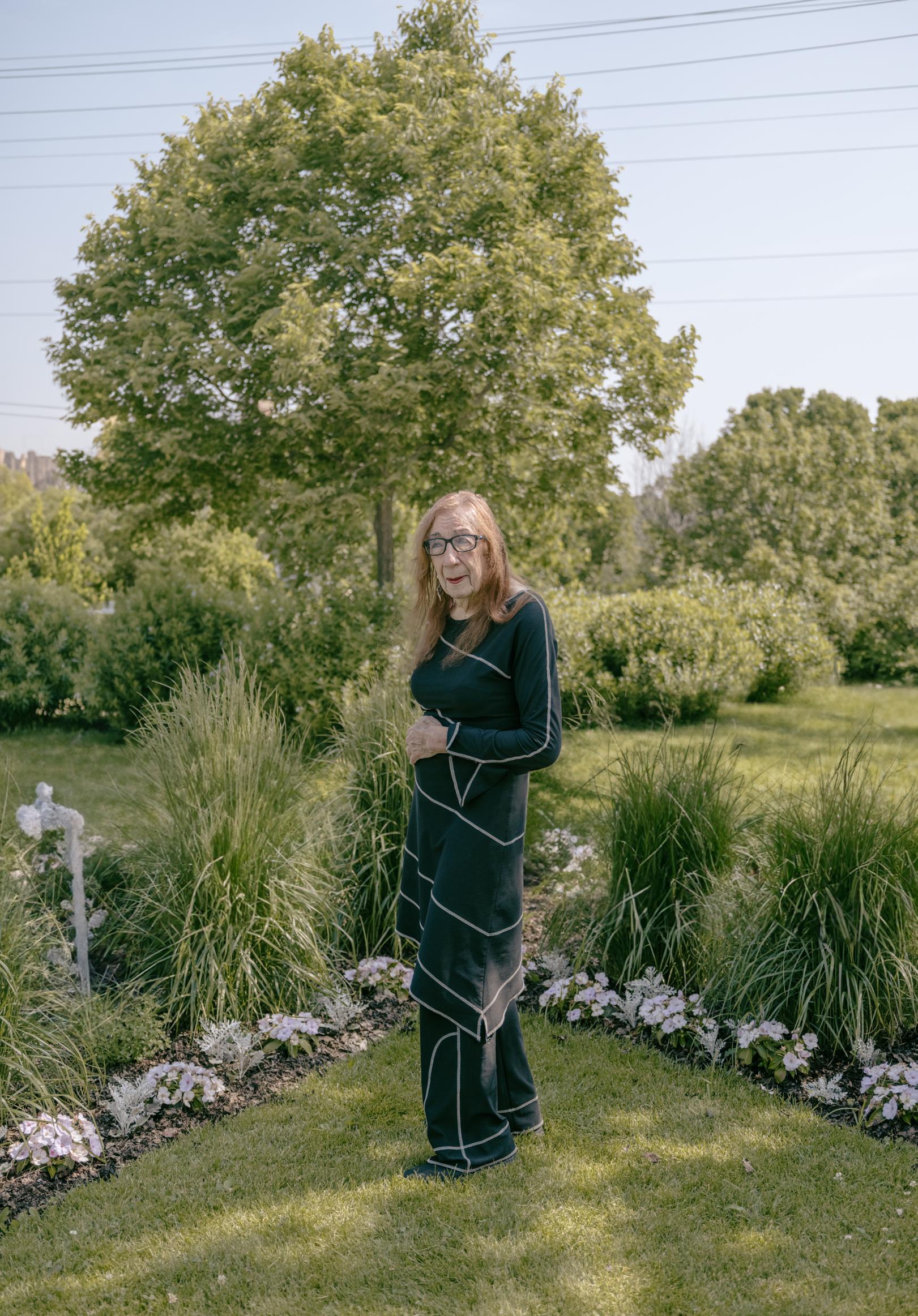
25 25 LONDON KING ’22

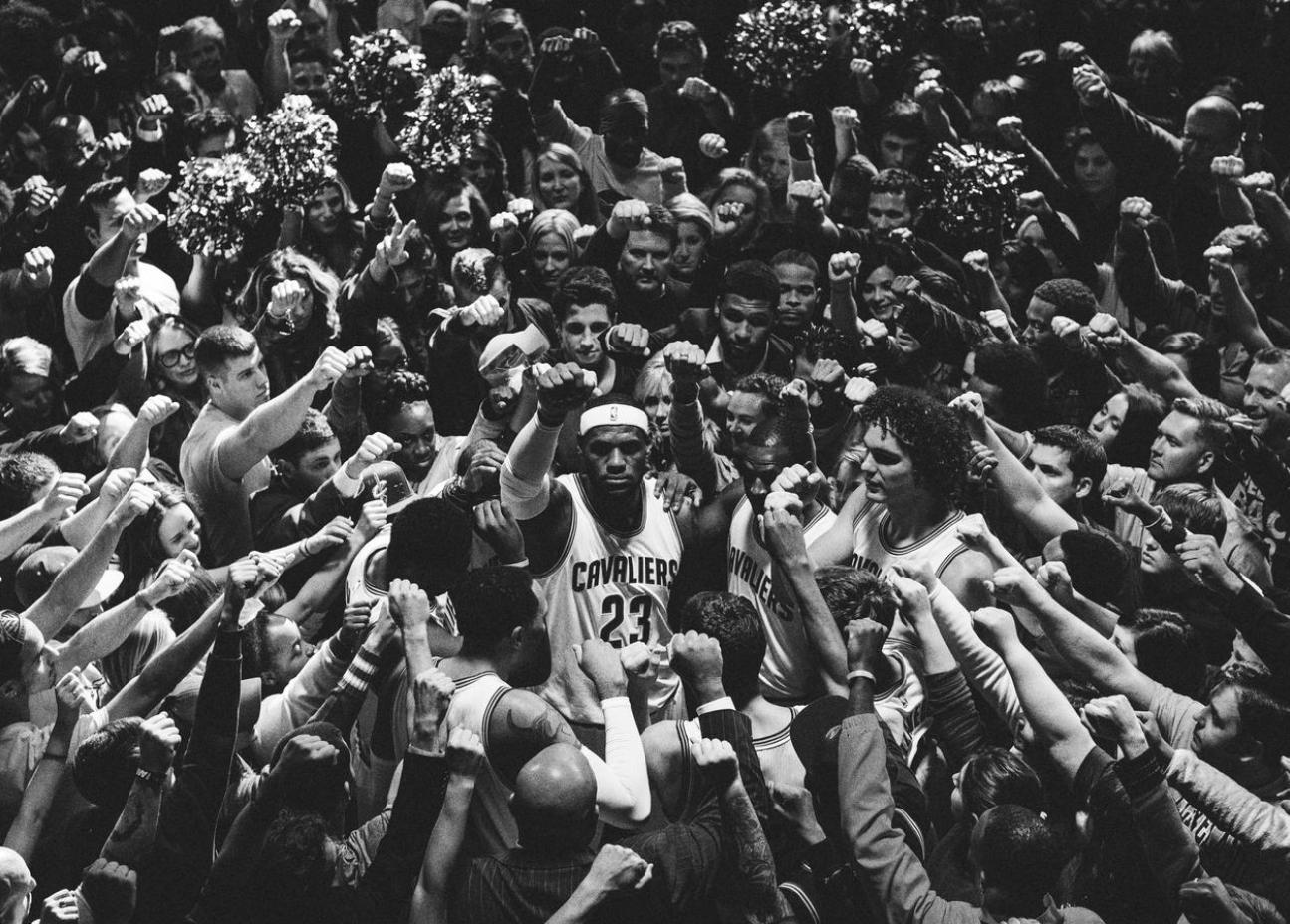
26 26 EMMA BEATREZ ’20, MFA, & LEE NOBLE ’20, MFA
GREG HOFFMAN ’92


27 27
KIRA SABIN ’21
HENRY LABOUNTA ’82


28 SOPHIA JABBOUR-UBAN ’24 GIGI JABBOUR ’93 28

29 29 LESLIE BARLOW ’16, MFA
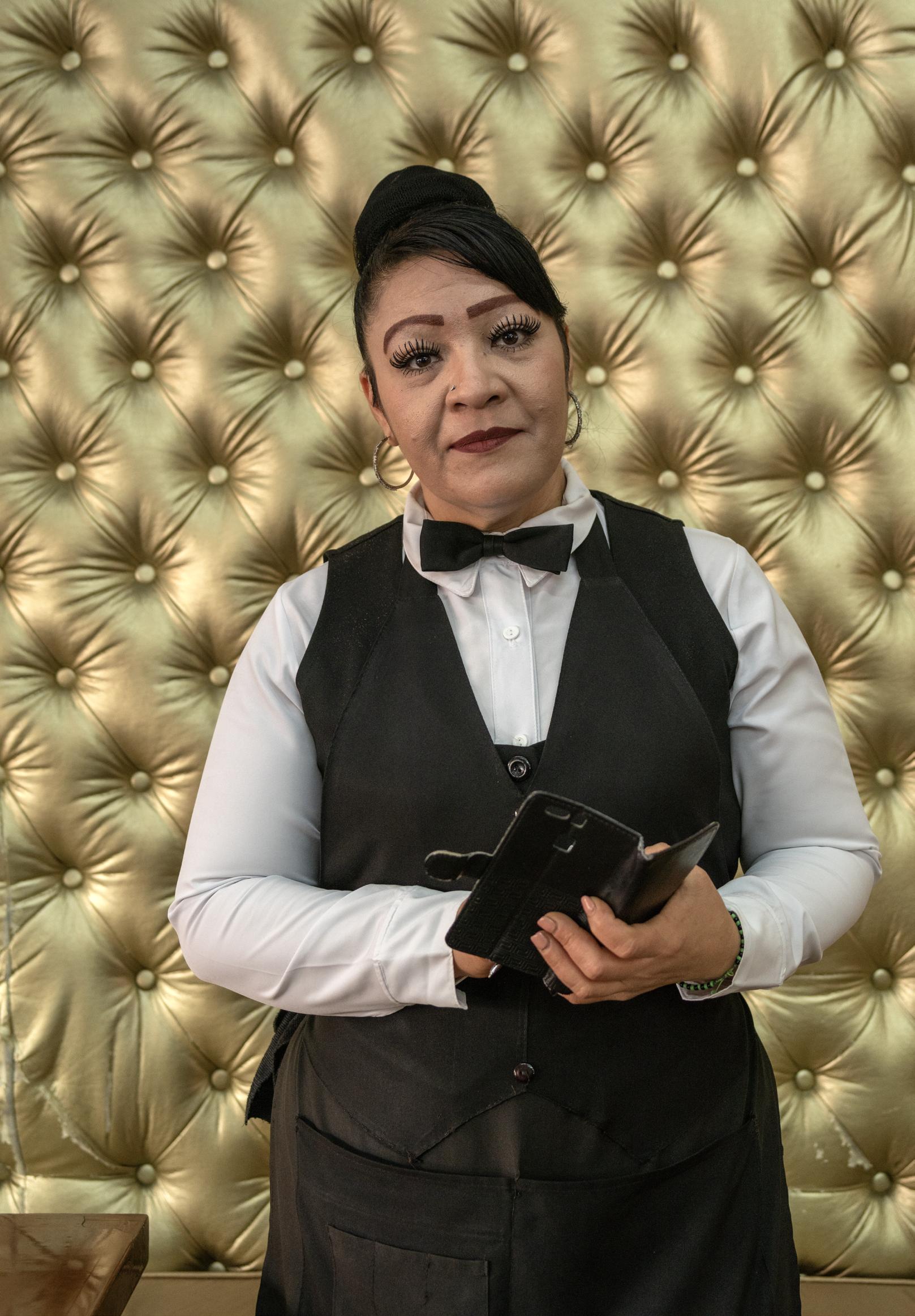
30 30 XAVIER TAVERA ’14



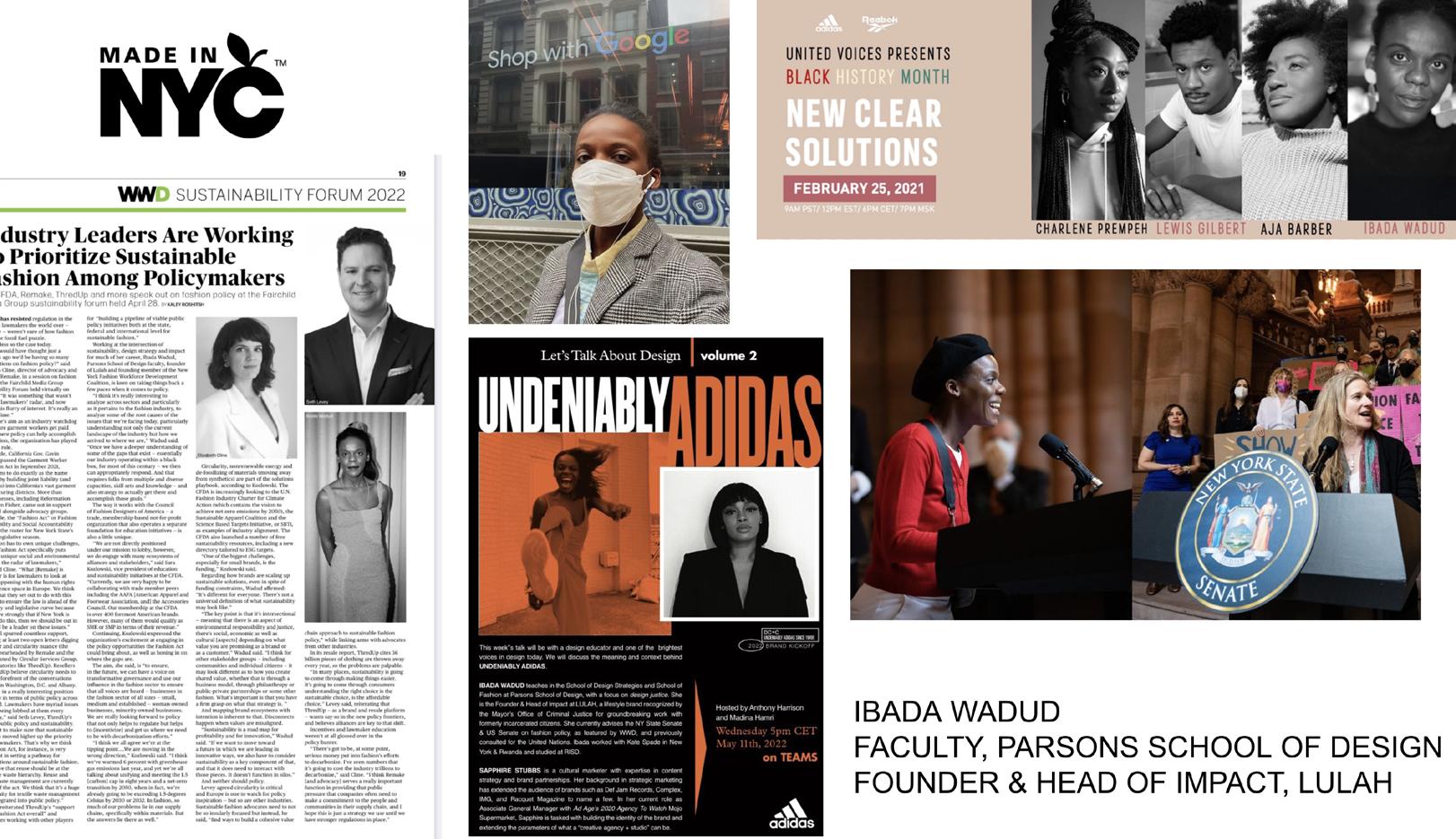





31 KEVIN KAMIN ’06 IBADA WADUD ’11, MA
31
REGAN GOLDEN-MCNERNY

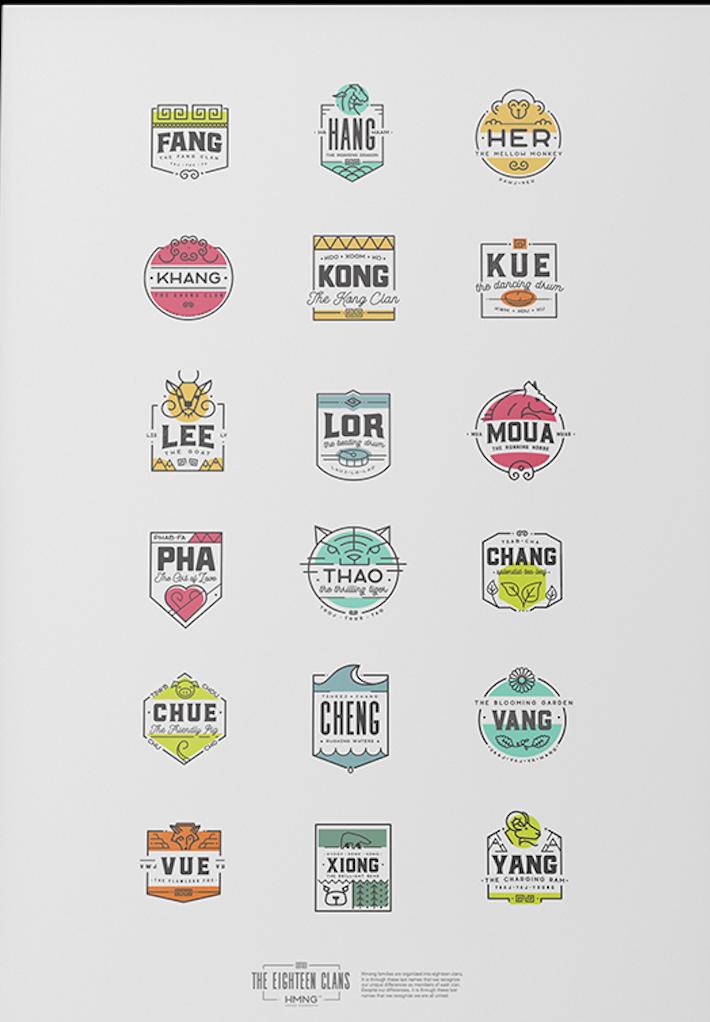


CY DECOSSE ’52 32 32 KATYA KISIN ’19 TOUSUE VANG ’11

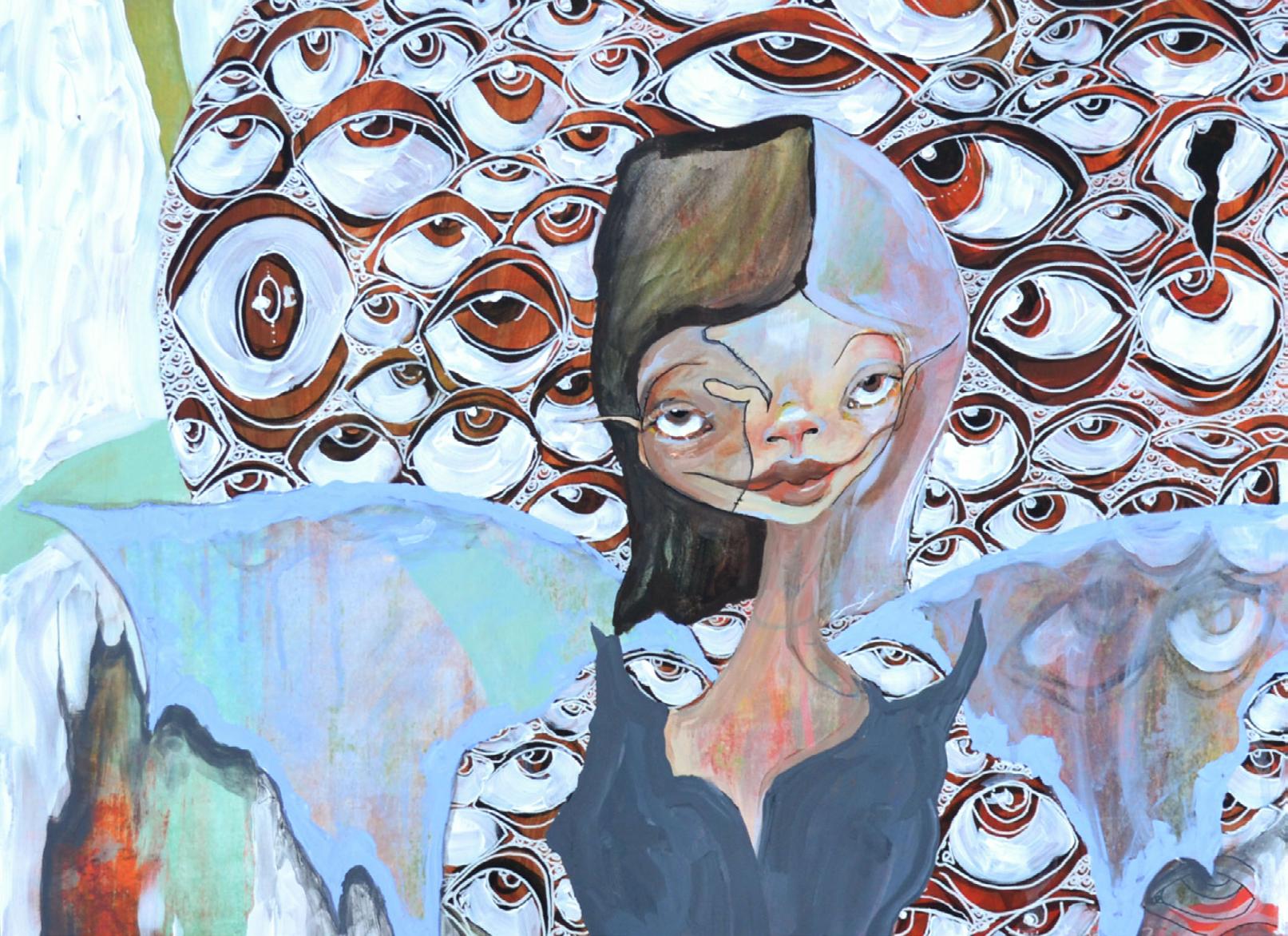
33 33 LONDON KING ’22
GREYLEY SABIN ’21
team , g o!
o ,

While MCAD is not known for its athletic teams, history shows that they did exist. Games were ad hoc and skills were few, but the MCAD spirit was strong. They proved that with a little sense of humor, artistry and athletics can be the “winning” combination.
One of MCAD’s sports legends was Iranian-born Siah Armajani, an internationally recognized sculptor, public artist, and painter. After emigrating to the U.S., he began teaching foundation studies at Minneapolis School of Art in the late 60’s and early 70’s. Nonskating Armajani was asked by his students coach MCAD’s hockey team—the Exacto Blades. He led them to a winless season.
“Armajani was in the process of developing his ideas about public art as a means of involving himself in American society. He took anti-authority positions on most of the political issues of the late sixties. Everybody laughed a lot in his classes. In one of the college yearbooks, there is a picture of Armajani on skates, being held up at the elbows by two giant Minnesota lads in hockey pads; they had talked him into being coach of the hockey team, mainly because he knew absolutely nothing about the game.”
– Calvin Tomkins
The New Yorker, March 19, 1990

34 34
g
FLASHBACK FRIDAY














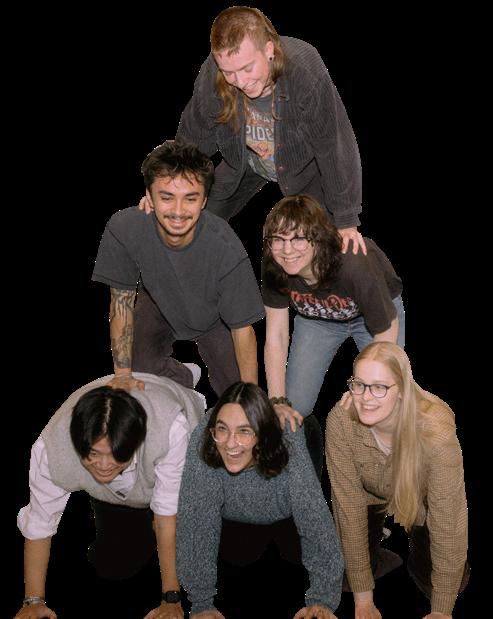













CONGRATULATIONS TO THE NEW ALUMNI! 35 35
Check out this chronological list of important news from the past year. Share your own news at mcad.edu/share-news or email
JODI REEB ’95 created eleven wire sculptures for Google Headquarters in Brooklyn, NY. AMIT TISHLER ’12, MFA, is slated to release graphic novels through Mad Cave Studios. MEGHANN ZILER ’23, MA, and ALANNA STAPLETON ’18, MFA, created a project called Shapeshift: A Quilt Library for Respite in the MCAD Library Gallery. DAREN HILL ’17 showcased The Bond Between Us, an exhibition at the Hennepin History Museum.
BEVAN SUITS ’85 created Jam With Cuba, offering career experiences to aspiring performers, engineers, managers, set designers, scriptwriters, and more.
WOODY OLSEN ’76 was featured in several exhibitions throughout the year in Wisconsin and Illinois.
TRISTAN CRAWFORD ’23 was one of several filmmakers to have their short films screened at the Main Cinema before the showing of Wes Anderson’s Asteroid City. TYLER PAGE ’02 won two awards for his most recent graphic novel, Button Pusher OWEN DENNIS ’09 served as creator and executive producer of the Among Us animated series, inspired by the game of the same name. JENNIFER MARLIN ’15 was featured in the StarTribune for her live event illustrations. CAROL SPENCER ’55 was interviewed by CNN about being the primary fashion designer for the ubiquitous Barbie doll from 1963–1999.
CLEO MALONE ’17 opened up their own yarn shop in Brooklyn, NY. CHRISTINE HUCK ’09, MFA, opened an exhibit in Evanston, IL chronicling her story with Hodgkin’s Lymphoma. GREG CARIDEO ’08 was featured in a recent New York Times write-up of the best exhibitions and galleries to visit in New York City, NY for his exhibition Dog Eared Reverie. MAY
LING KOPECKY ’22, MFA, curated Lived Experiences at the Plymouth Community
Center Art Gallery. The exhibition featured MCADians DREW MAUDE-GRIFFIN ’21 and ANNA LYLE ’23, MFA . ELISSA CEDARLEAF DAHL ’07, MFA , Fulbright Distinguished Educator, created street art in Medellín, Colombia. K. DAPHNAE KOOP ’79 exhibited But Trailing Clouds of Glory Do We Come at Susan Hensel Gallery in Minneapolis, MN.
IVONNE YÁÑEZ ’23, MFA, exhibited her installation Rosa Mexicano at the SOO Visual Arts Center in Minneapolis, MN. ESSMA IMADY ’16, MFA, was awarded with first place in the Fine Arts competition at the 2023 Minnesota State Fair. OLIVIA PEDERSON ’19, MA, was featured in USA Today regarding her app, Sustaio. LISA NEBENZAHL ’79 was awarded the 2023 Denis Roussel Award for her photography work. ROSARIO PARKER GORDON ’23, MFA, was featured on the Walker Art Center MN Artists page for their exhibition Midwestern Masculinity: Decoy and Drag. JAMIE KALVESTRAN ’85 displayed an exhibition of her artwork in Granite Falls, MN. JORDAN KAY ’09 was featured in The Stranger, a Seattle news outlet. BOBBY ROGERS ’14 was featured in several articles, including Artful Living’s spotlight series. CHARLES PRICE ’13 showed their painting The Oak Dunin at the North Suburban Center for the Arts in Fridley, MN. SUSAN HAGEN ’80 launched a new exhibition at the Schuylkill Center in Philadelphia, where she is a LandLab artist in residence. JARED MAIRE ’20 co-curated Disrupt! Decentralize! Distribute! DIY Printing in the Queer Underground. KIM BOGEMAN ’13, LUCY COMER ’19, CONNOR GORDON ’21, D GUZMAN ’20, ALXNDR JONES ’11, DANA KOEHLER ’17, MFA , JUNE LE ’20, MORGAN MOEN ’21, JENNY MORAN ’14, VIOLETA ROSTEIN ’15,
36 36 NEWS, AWARDS, AND RECOGNITION
alumni@mcad.edu.
STUDENT








LIFE FOLIO 37–39
(L TO R, TOP TO BOTTOM) ELOISE KOLTUN ’25, ILLUSTRATION / MAX PAULIN ’24, FINE ARTS ’25, SCULPTURE / NAOTO
ENVIRONMENTS
LICHTBLAU-TEPLEY ’24, COMIC ART / JO FARLEY ’25, PRODUCT ANIMATION / ROMAN ZYCH ’24, FILMMAKING / MOQUI JOY ’25, WEB AND MULTIMEDIA



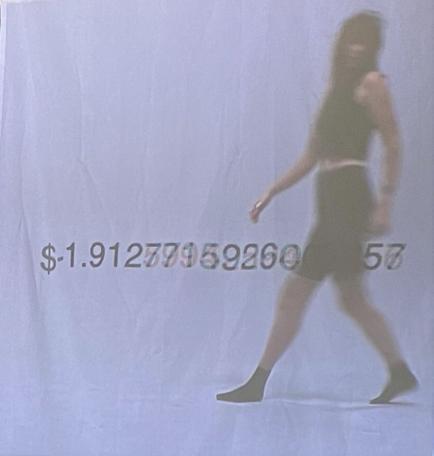





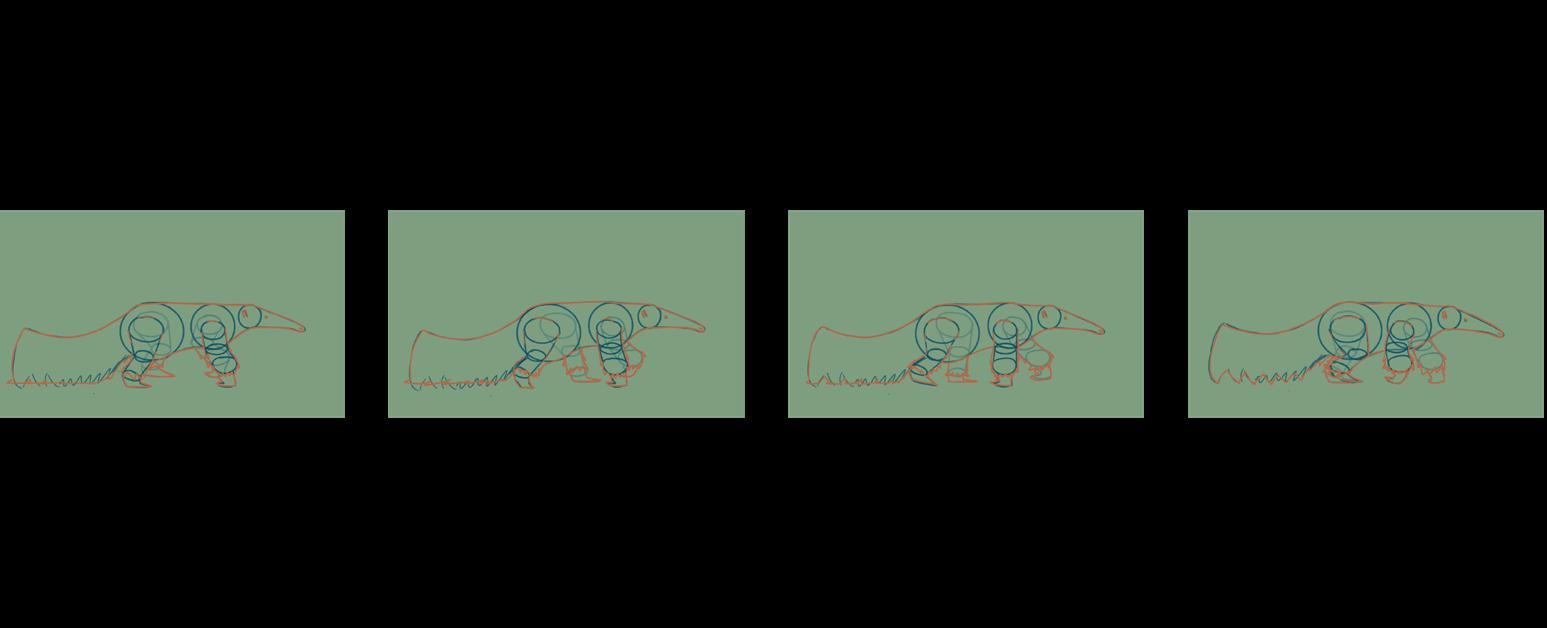 ARTS STUDIO / LILY FRIDELL ’24, FINE ARTS STUDIO / INGRID SCHELZEL ’23, WEB AND MULTIMEDIA DESIGN / VERNON VANDERWOOD ’24, FINE ARTS STUDIO / CAMRYN SMITH ’23, PHOTOGRAPHY ENVIRONMENTS / ELLA MOOMEY ’25, ILLUSTRATION / IZZY LETO ’25, FINE ARTS STUDIO
ARTS STUDIO / LILY FRIDELL ’24, FINE ARTS STUDIO / INGRID SCHELZEL ’23, WEB AND MULTIMEDIA DESIGN / VERNON VANDERWOOD ’24, FINE ARTS STUDIO / CAMRYN SMITH ’23, PHOTOGRAPHY ENVIRONMENTS / ELLA MOOMEY ’25, ILLUSTRATION / IZZY LETO ’25, FINE ARTS STUDIO
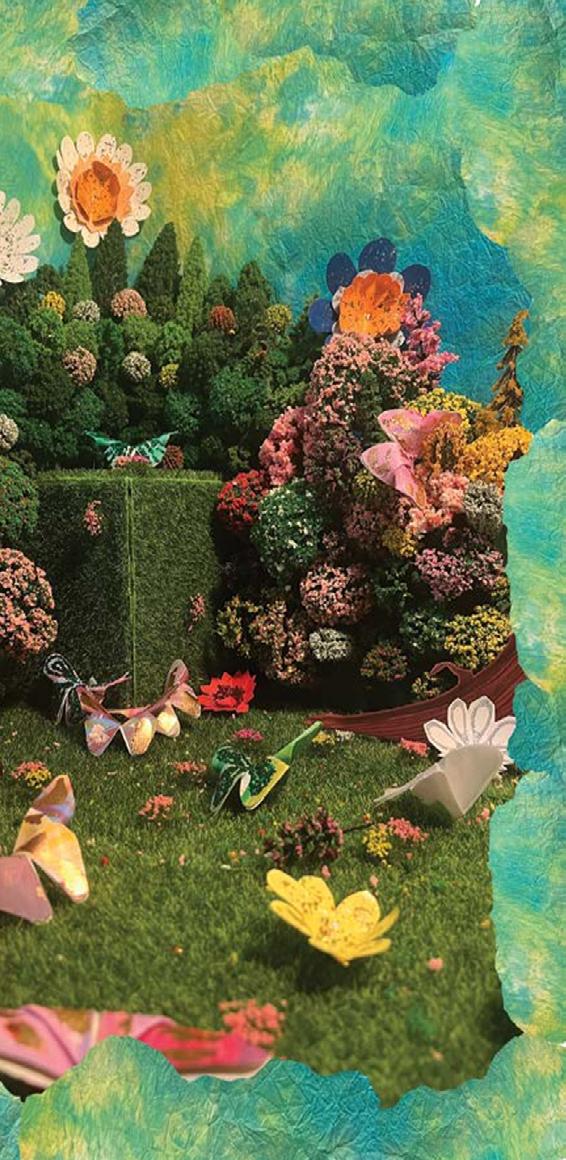





MULTIMEDIA ENVIRONMENTS / JOJO SATHULURI ’26, GRAPHIC DESIGN / JULIA MELES PHOTOGRAPHY / LYNAEA RUSSOM ’24, DRAWING AND PAINTING / CADE JANVRIN ’25, / SARAH HUTCHISON ’23, GRAPHIC DESIGN / SARAH LONGFIELD, ’24, FURNITURE

ANH TRAN ’21, AND RAÚL VILLANUEVA ’17 were featured in Posters for Parks fundraising event at Minnehaha Regional Park Pavilion in Minneapolis, MN. LEON HUSHCHA ’68 displayed The Art of Leon Hushcha: The Way at The Museum of Russian Art in Minneapolis, MN. LISA KILL’S ’15 displayed Crystal Hinge at the Kiehle Gallery in St. Cloud, MN. KELLY FRANKENBERG ’03 displayed Beauty from Ashes, an exhibition that examined gun violence in the United States. BEN MOREN ’10 will host an upcoming talk at the School of Visual Arts in New York, NY. MELANIE PANKAU ’99 is one of three artists featured at Bethel University’s exhibition in St. Paul, MN. TIM CORTES ’89 was featured on the National Hockey League’s (NHL) official website highlighting his career as an artist for the NHL blog Color of Hockey. JEN HANCOCK ’19 was featured in a panel at San Diego Comic-Con. ED RATH ’74 appeared in the new film The Disappearance of Shere Hite COLE REDHORSE TAYLOR ’17 designed a hockey mask worn by Minnesota Wild’s goalie Marc-André Fleury. TOM GORMALLY ’97 has a piece titled Bettie and the Howling Fox now in the permanent collection of the Blanden Memorial Art Museum. ELLIOT LOONEY ’08 opened up his own art gallery in St. Paul, MN, called TheZ1. JEN HANCOCK ’19 was interviewed by The Art of Costume podcast about her role as a costume concept artist for the new Haunted Mansion. JESÚS LI ’23, MFA, and KARA FAYE GREGORY ’23, MFA, participated in the 20th Anniversary of Art Shanty Projects on Lake Harriet in Minneapolis. DREW MAUDE-GRIFFIN ’21 curated an exhibition for the Minnesota Museum of American Art. BOBBY ROGERS ’14 launched a successful Target campaign called Black Beyond Measure, empowering Black identity in skincare and beauty products. ANDREA CARLSON ’05, MFA, and GEORGE MORRISON ’43 were two Ojibwe artists exhibited at the Katherine Nash Gallery (University of Minnesota) in an exhibition titled Dreaming Our Futures:
Ojibwe and Očhéthi Šakówiŋ Artists and Knowledge Keepers NATHANAEL FLINK ’94 exhibited Falling Into Place at Veronique Wantz Gallery. MICHAEL MERCIL ’78 spoke at the Athenaeum Music & Arts Library in San Diego. ANDREA CARLSON ’05, MFA, was awarded Creative Capital’s 2024 Wild Futures: Art, Culture, Impact grant.
DAKOTA HOSKA ’12, a citizen of the Oglala Lakhota Nation, is the associate curator of Native Arts at the Denver Art Museum.
AARON SPANGLER ’93 exhibited Stung By a Lie I Believe in Los Angeles, CA.
EDGAR MIRAMONTES ’23, MA, was interviewed about his recent appointment as the executive and artistic director of UCLA’s Center for the Art of Performance. TOM ESLINGER ’90 displayed his typographical design works in a solo exhibition titled Stuck in My Head at the Center on Halsted.
NOAH LAWRENCE-HOLDER ’17, a Black, non-binary illustrator, collaborated with the Minnesota Vikings in honor of Black History Month. SUYAO TIAN ’17, MFA, exhibited watercolor paintings in Teetering on the Brink at the Claire Oliver Gallery in New York City, NY. DAKOTA HOSKA ’12 was selected by the Wyoming Arts Council as a juror for the 2024 Native Arts Fellowship. LUCIE SKJEFTE ’16 helped redesign the Thunderbird moccasin for the shoe company Minnetonka, MN.
STEVE BATEMAN ’99 discussed his sculptural work in Good Info News Wire His work utilizes recycled objects. KARN KNUTSON ’93 presented a solo exhibition, Inside the Moments, in East Austin, TX.
SARA SUPPAN ’16 was recently featured in Potluck (IV), an annual food-themed exhibition at Hashimoto Contemporary in L.A., curated by Dasha Matsuura. Another of Suppan’s paintings, Fleurs, was featured in Together to Gather at Weinstein Hammons Gallery. In July, she will have a solo show at Moosey in East London.
40 40 NEWS, AWARDS, AND RECOGNITION

SARA SUPPAN ’15
alumni benefits: mcad is here for life
ART SALE FOR ALL
Calling all alumni talent! Save the date for this year’s MCAD Art Sale, taking place from November 21-23, 2024. Whether you’re an avid shopper, a passionate participant, or both, we invite you to join us for this spectacular event. Last year marked another great gathering, with incredible alumni talent spanning the 60’s to current students who came together in a remarkable display of creativity. In its 27th year, this beloved event continues to be a Twin Cities’ favorite. We can’t wait to see you there, as MCADians and our dedicated creative community continue to fuel this cherished tradition! Make sure your information is up to date to receive the latest communications at mcad.edu/alumni-informationupdate.
CLASS DISCOUNTS
Invest in yourself through MCAD Continuing Education. All degreed alumni are eligible to take a Continuing Education course per season for only $25. Act soon because seats are limited! Discover all classes at mcad.edu/ce. To take advantage of this alumni benefit, call the Continuing Education office at 612.874.3765 to register and pay with a credit card.
LIFELONG CAREER COACHING
At any stage of your career journey, Career Development can help you with your cover letters, resume, and job search. They can polish your interviewing and networking skills, plus offer great resources to establish an internship or navigate your career path. Reach out to careers@mcad.edu to get started!





 SANJIT SETHI PRESIDENT
SANJIT SETHI PRESIDENT



















 SOPHIA JABBOUR-UBAN ’24
GIGI JABBOUR
SOPHIA JABBOUR-UBAN ’24
GIGI JABBOUR






 IBADA WADUD ’11, MA
IBADA WADUD ’11, MA








































































 ARTS STUDIO / LILY FRIDELL ’24, FINE ARTS STUDIO / INGRID SCHELZEL ’23, WEB AND MULTIMEDIA DESIGN / VERNON VANDERWOOD ’24, FINE ARTS STUDIO / CAMRYN SMITH ’23, PHOTOGRAPHY ENVIRONMENTS / ELLA MOOMEY ’25, ILLUSTRATION / IZZY LETO ’25, FINE ARTS STUDIO
ARTS STUDIO / LILY FRIDELL ’24, FINE ARTS STUDIO / INGRID SCHELZEL ’23, WEB AND MULTIMEDIA DESIGN / VERNON VANDERWOOD ’24, FINE ARTS STUDIO / CAMRYN SMITH ’23, PHOTOGRAPHY ENVIRONMENTS / ELLA MOOMEY ’25, ILLUSTRATION / IZZY LETO ’25, FINE ARTS STUDIO







